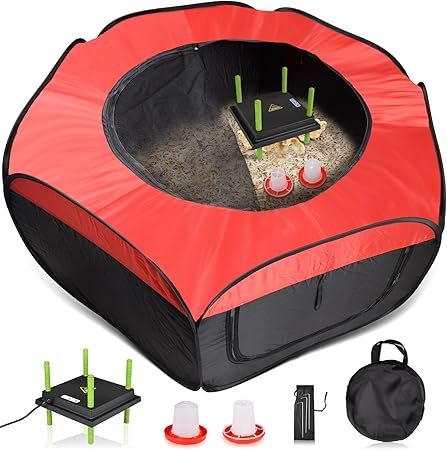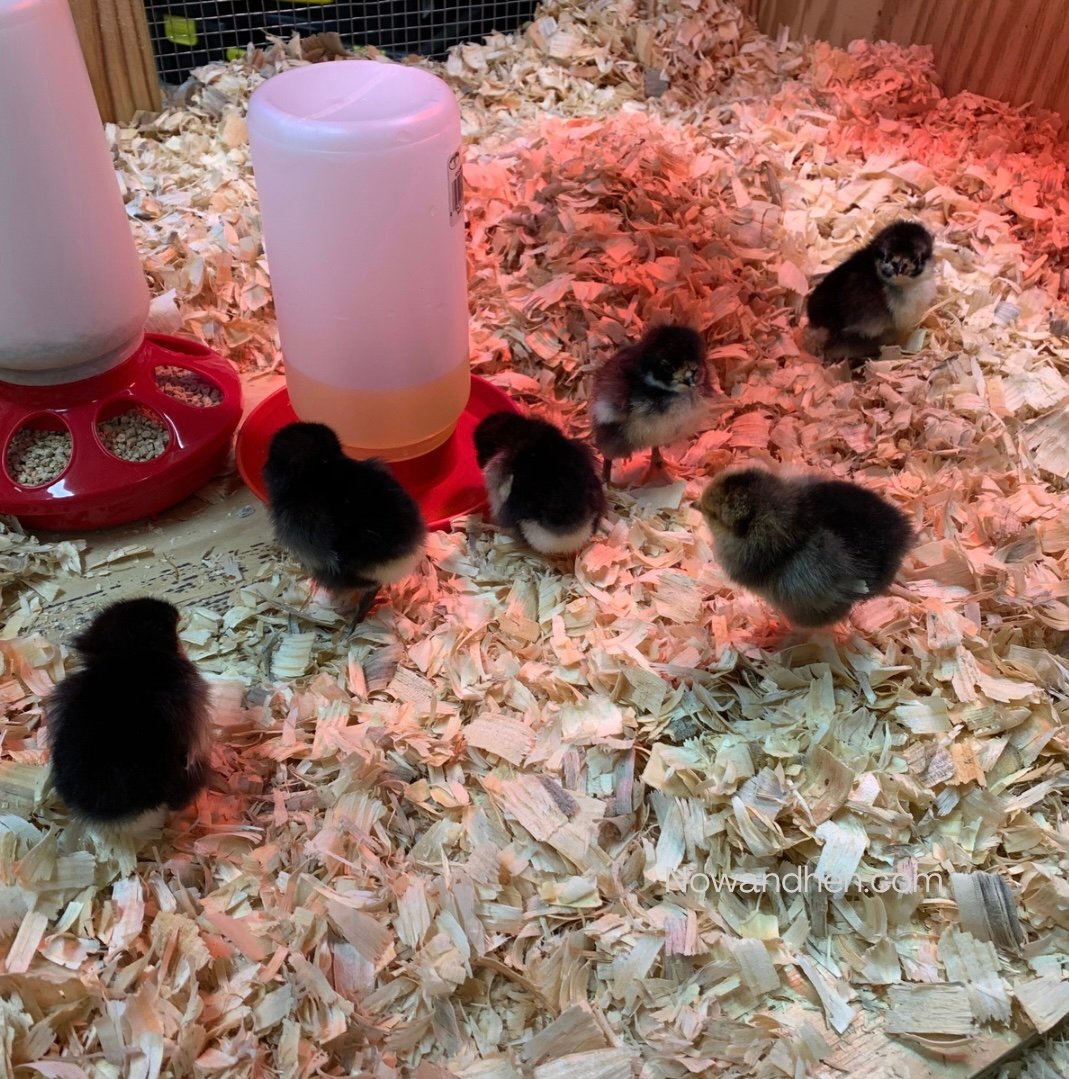Step by Step Guide
This page includes affiliate links which I may receive a commission for. All opinions remain my own and I only recommend products or services I believe will add value to my readers.


Supplies Needed

10
Brooder Box Four-piece Package
A nice four-piece starter set

Purchase Your Chicks
Early Spring is a great time to purchase baby chicks. You can get them from a local farm, Tractor Supply or other supply store, or order them from an online site such as Mypetchicken.com. If ordered online, be aware that you will most likely have to pick the chicks up at the post office when they arrive. If you have the choice to get the chicks vaccinated, I recommend doing it. It will cost a little bit more, but it is totally worth it in the long run.
Consider Getting All Hens
If you live on a small piece of property close to your neighbors, you might want to consider getting all females. Roosters are loud. They sell chicks as straight runs which means they have not been sexed or you can choose the sex. Choosing the sex is not always a guarantee, but I personally have never had a problem.
Set Up Your Brooder
Before your chicks come home, you should set up your brooder in an enclosed area outside of your home such as a garage or shed. Make sure your brooder lamp is positioned properly to keep the brooder at 95 degrees Fahrenheit. You can reduce the temperature by 5 degrees Fahrenheit every week until the chicks are fully feathered. Set up your waterer with the electrolytes added to the water. Set up your feeder with starter crumble. You can use newspaper to line the brooder for the first few days. You will need to change this often.
When the Chicks Arrive
When the chicks arrive, dip the tips of their beaks into the waterer before placing them in the brooder so that they know where the water is. Check and adjust the temperature often and keep the feeder and waterer clean and full. Keep the brooder as clean as possible by changing the bedding often (i.e. at least every couple of days or when it looks dirty). Gently interact with the chicks often so that they are comfortable with people.
Check for Pasty Butt
Be sure to check the chicks’ vents to make sure they stay clean and there is no poop stuck on their backsides. This could kill them. If you see any poop stuck, do not pull it off. Gently soak in warm water or clean off with a wet paper towel to clear. Dry the chick off and make sure to add the electrolytes to their water. Double check the temperature in the brooder, Pasty Butt might mean the temperature is too hot or too cold. If you are feeding them anything other than starter crumble then put some chick grit in the brooder near their food. You can also switch over to medicated starter crumble for a while.
Moving Them Outside
When your chicks are six to seven weeks old, you can move them outside to their coop as long as it is at least 50 degrees Fahrenheit outside. For the first few days, you will have to put them inside the coop when it starts to get dark outside. If they are too hard to catch, you can wait until it gets dark out and they will be easier to scoop up. Chickens cannot see well in the dark. After a few days, they will go inside by themselves at night. Make sure you close and secure the coop door every night to keep them safe from predators.
Changing Their Feed
When the chicks are eight weeks old you can upgrade them to grower feed and at sixteen weeks you can change them over to layer feed.



 .
.


